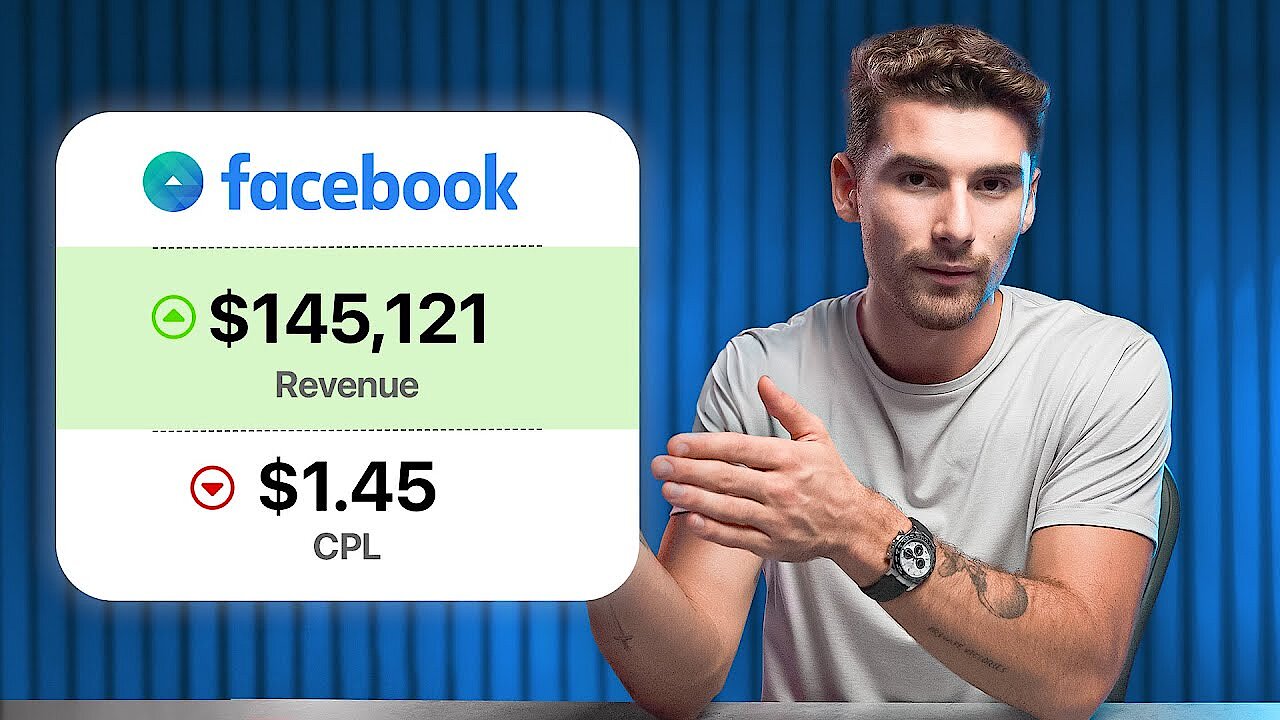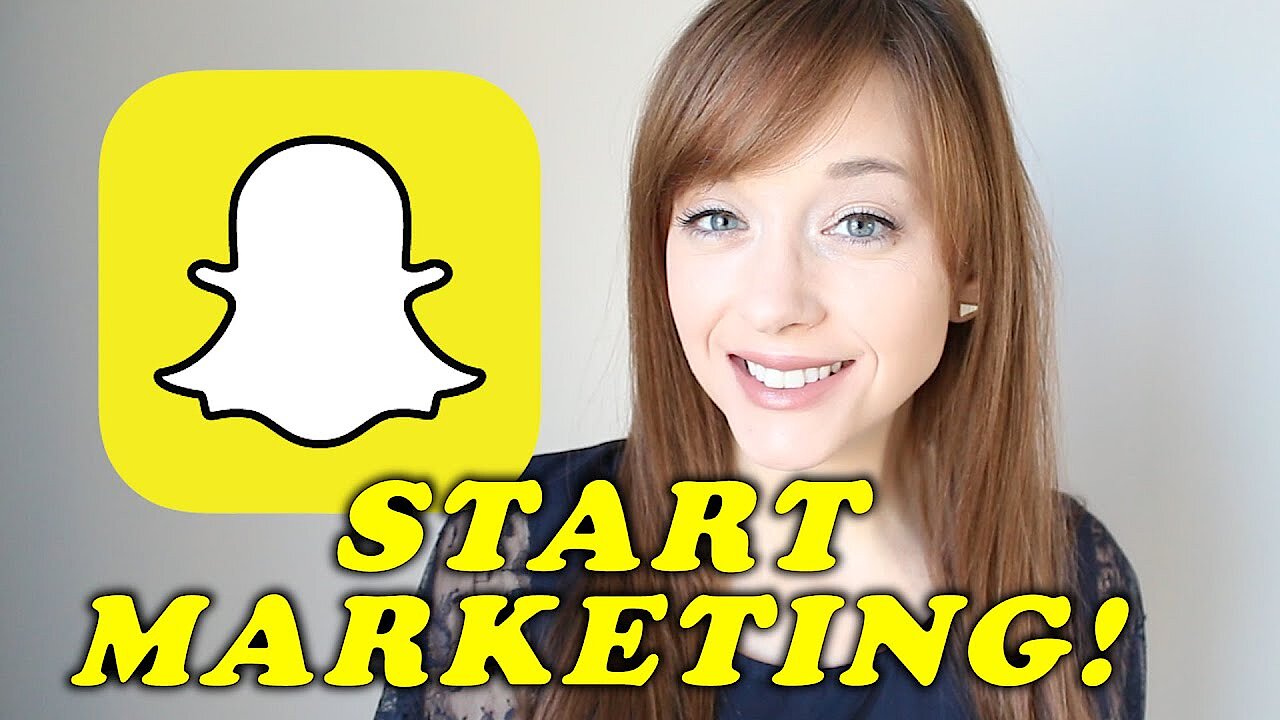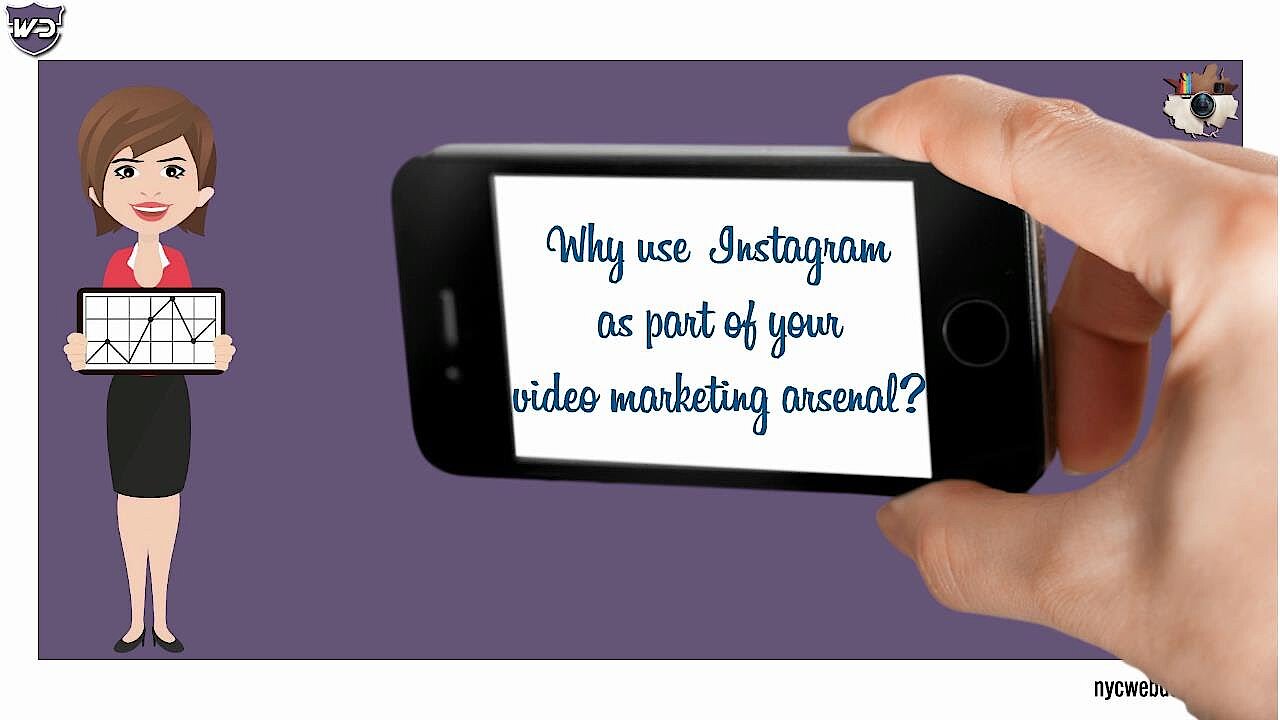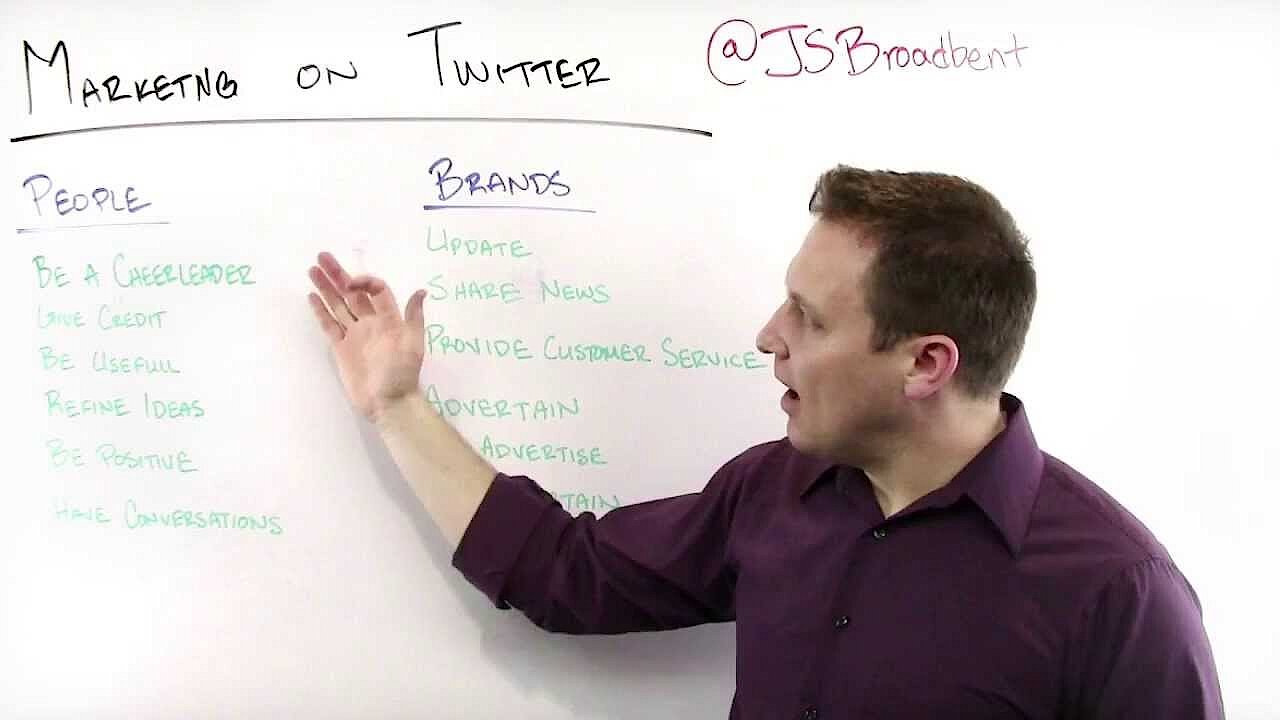Video marketing – Content marketing 2.0
Is the written word already a thing of the past? If you look at the habits of millennials, you would no doubt come to the conclusion that no generation has ever been this hungry for video content. The most popular media content today is the so-called UGC videos (User Generated Content). This type of video can be viewed millions of times on many different platforms such as YouTube or Vine.
To keep up with the times, marketing structures have to adapt to user preferences. Correspondingly, companies must restructure their campaigns if they want to reach millennials. While traditional marketing still includes long-established marketing such as newspapers and radio campaigns, video marketing concentrates more on new audiovisual channels. Television only plays a marginal role. Integrating video marketing into innovative campaigns leads to promising opportunities, which will greatly increase the target group reach.
Online video marketing: high potential for businesses
The lust for original content is steadily growing, and the video clip format has almost overtaken the written word. Many users find videos easier and more modern compared to comprehensive articles. The figures speak for themselves with 55% of people watching videos online daily, and almost 50% of internet users looking for videos related to a product or service before they come to the store.
The video on demand market includes pay-per-view, video downloads, and streaming media. In 2016, the market share was over 42% in the U.S., making it the top country to use video on demand. Online videos are quickly becoming the most important means for all users to satisfy their need for information and entertainment. Small business owners should definitely follow suit to not miss out on this trend.
Video clips have been more than pure entertainment for a long time since they have now become a unique style of online communication. It’s not only YouTubers and bloggers using video clips to set the scene with their own online concept, but also startups and companies in all sectors rely on video marketing. Often, they use a style that offers the viewer a mix of information and entertainment.
They make use of the format’s characteristics: spontaneous video clips convey a feeling of immediacy and honesty, which is beneficial to the brand and/or the product being advertised. The campaign initiators can therefore advertise their products in an informal framework without having to appear too commercial.
How does video marketing work? – the concept
Before you begin producing clips for video marketing, you should have a clear idea in mind. The usual rules apply here when developing a marketing campaign: first, determine which target group you want to reach. Then, define the core outline of the campaign, and tailor it to the interests of the people in the target group.
Now you need to consider which role your video should play in the campaign. Is this an advertising strategy or simply a short clip, which you hope will go viral and generate attention? The optimal spread is a crucial factor in online video marketing. Boring films won’t be shared by social media users so it’s therefore crucial to be original and imaginative in order to achieve a viral effect.
Video marketing planning also varies depending on the purpose of the clip. For example, if you want to explain how a product works, it is a good idea to include an animation. If you plan to apply for crowdfunding, you need to factor in some testimonials.
Spreading videos via social media
Although the popularity of video marketing is growing steadily, make sure not to neglect the important basic requirements to ensure the produced clips are as successful as possible. Nowadays, it isn’t enough to create well-produced film material or to attempt an original idea in a low-budget way. The success of video marketing depends on how well the content spreads, therefore one has to make it as easy as possible for the user to share the content. Company-owned social media channels on Twitter and/or Facebook often have a small reach since the number of organic likes is relatively hard to achieve. The followers are usually the company’s own employees or users that are close to the business in some other way. YouTube is most popular, since the platform specializes in videos and short clips. In addition to Google, YouTube experiences the most search requests by users from around the world. A successful clip won’t just remain a local phenomenon, but will also spread further afield. If the focus is on international spread, you should make the video easy to understand and, if possible, add subtitles. The subject of the video must be appealing to the user and the message should be easy to understand in a short time. However, besides the content, the keyword ‘optimization’ is also crucial for the video’s success. For a good hit rate among users, you should include the appropriate keywords in the video’s title and description. Research these first and use the ones that are searched for the most frequently. In addition to YouTube, there are other platforms on which the public can find your videos. For users with more artistic requirements, Vimeo is a good place to start. Compared to YouTube, this platform offers better technical possibilities for uploading high-quality videos online. The compression rate is not as severe as it is with the competition, and for a small fee, you can upload entire movies in high framerate and resolution via a Premium account. Social media top dog, Facebook, has also jumped on the video marketing bandwagon. The network recently introduced the autoplay feature, which automatically starts video clips as they appear in a user’s feed. Users’ reactions to this new feature weren’t as good as hoped, since it made it almost impossible to escape from videos in their feed. However, from the perspective of advertisers, the autoplay feature offers higher chances of click rates and shares. The fastest booming section of the web is the mobile sector. In video marketing, it’s therefore essential to optimize clips for tablets and smartphones. The younger generation is using mobile devices more than computers, and the platforms are adapting to this. It’s possible to make use of all of Instagram and Snapchat’s functions on mobile devices.
The advantages of video marketing
The decisive advantage of a video marketing campaign lies in the medium’s multimedia quality. Audiovisual content generates more attention than a written advertisement with images or a commercial on the radio. A video can communicate information in a bundled form without boring or overwhelming the consumer. Human emotion can be best conveyed in cinematic language, therefore video marketing is best suited for generating a spectrum of emotional responses.
Clips and videos don’t only enable you to arouse the interest of your customers and followers, but integrating videos in your site also increases your search engine ranking. In addition, you can give your visitors the opportunity to write comments and share their experiences. This is how you create organic interest in your videos, and with some luck, your clips will be shared e.g. by a share button which you can set up.
If you want to sell a product, you should create a video that explains the product’s features in detail. This could lead to visitors staying longer on your website. The more detailed the information is, the more likely a higher conversion rate is.
Tutorials are a popular form of entertainment on YouTube. Many companies use short promo clips to explain their scope of activity to a wider audience. If you impress visitors with an original clip, your brand recognition will increase. Creative videos are well received and are therefore recommended.
Film material for video marketing – where to get it from
The standards of commercial video production have continued to evolve over the course of digitization. Nowadays, it’s possible to create attractive water and aerial photographs yourself without enlisting the help of expensive film teams or needing a big budget. However, if you do not have the possibility or the time to film your own, you can buy the raw material from stock photo providers (e.g. Shutterstock). The advantages of this material is the consistent high quality of the images as well as the pre-fulfilled legal requirements and universal applicability. You just need to buy the required media once and then you can use it in various campaigns.
What does video marketing cost?
Not all companies have a big marketing budget available, for example, startups may find it difficult to obtain financial resources. You don’t need much, however, to create a good video: these videos are often likeable and don’t make a secret of their low production expenditure, and instead choose to win people over with wit and artistic aspiration. On the other hand, a boring topic won’t gain any fans no matter how great the resolution is. Films only offer so much – the original idea is what counts.
However, you shouldn’t cut corners in the wrong places, for example, by making a new video out of old material thrown together. Missing parts and unsmooth transitions are enough to make a mockery out of your video. In video marketing, you should therefore have some knowledge of how to create a video and how to implement it.
There’s no limit for how much a video should cost, but if you don’t want your film to look like it’s been filmed with a smartphone, you should anticipate a four-figure cost for the film production. There are also offers available where you can get the total package for less, but you should stay away and rather look for a video production partner with whom you can plan long-term projects.
Video marketing tips for the most popular social media platforms
Over the years, individual video marketing strategies have evolved on individual social media platforms. Using the following tips for the five major social media channels, you can create videos that are tailored to the most popular platforms.
Facebook – the best option for viral videos
 To display this video, third-party cookies are required. You can access and change your cookie settings here.
To display this video, third-party cookies are required. You can access and change your cookie settings here. Videos on Facebook should be fun, entertaining, emotional, and have a high share factor. If you are planning Facebook videos, you should prioritize these factors, since a clip on Facebook will only reach its full potential after a high number of shares.
Facebook offers advertisers a variety of ways to precisely tailor video marketing to potential customers. Metrics such as personal interests, locations, page visits, and more, are available as targeting options. Facebook has been focusing the news feed algorithms on video content for a long time now. This means more organic reach and growth for marketers.
Here are some practical tips for creating successful Facebook videos:
- Add subtitles to your video. 85% of videos on Facebook are played without sound.
- The first three seconds count. Facebook’s autoplay feature registers anything after three seconds as a complete video view.
- Use the resolution formats 720p or 1080p HD with an aspect ratio of 16:9. Export your video in the format and resolution in which it was filmed.
- Create a compelling title for your Facebook live sessions to get more viewers.
YouTube – the largest video search machine worldwide
 To display this video, third-party cookies are required. You can access and change your cookie settings here.
To display this video, third-party cookies are required. You can access and change your cookie settings here. Many brands and influencers have found their niche on YouTube. Established YouTube personalities have discovered a formula for success on the largest video platform, and have a large number of loyal followers. For most users, YouTube serves a very different (and still important) function. YouTube processes more than 3 billion search queries per month and is the second largest search engine directly after Google – the owner of YouTube.
When you upload and optimize videos on YouTube, you can then embed them easily into your website. Create videos that provide value for your audience and optimize the clips with subtitles, tags, and detailed descriptions.
Here is a short list of the best practices for video marketing via YouTube:
- Add subtitles to your video. YouTube videos with subtitles receive up to 40% more views.
- The first 3-10 seconds count. 20-25% of viewers watch less than 10 seconds of a video.
- In addition to the metadata, use apt video descriptions and tags to improve your SEO rankings.
- Use the high-resolution formats 720p or 1080p HD with an aspect ratio of 16:9.
Snapchat – videos in authentic raw format
 To display this video, third-party cookies are required. You can access and change your cookie settings here.
To display this video, third-party cookies are required. You can access and change your cookie settings here. For younger users, Snapchat is already a well-established form of online communication. This makes the platform an important channel for video marketing if you want to reach a young target group.
Snapchat users watch an incredible 10 billion videos a day. The videos then disappear because they aren’t saved by default, although this doesn’t affect their popularity at all. The incredible numbers promise tremendous opportunities for companies to increase their reach. The perception limit of the (mostly young) users doesn’t seem to be exhausted, the content volume can grow further still.
Many brands and companies are looking for an ideal formula for generating the most user engagement as possible on this relatively new platform. Popular ideas so far have been personalized filters and animated masks that can be used for selfies.
Here’s a short list of helpful tips for video marketing on Snapchat:
- Add drawings and text to your videos. 33% of all videos on Snapchat are viewed without sound.
- The first 3-10 seconds count. 20-25% of viewers watch less than 10 seconds of a video.
- Record in portrait mode since this is the most prevalent format on Snapchat and users are used to it.
- Note that Snapchat users can get bored quickly. Be sure to create entertaining and useful content.
Instagram – videos as a source of inspiration
 To display this video, third-party cookies are required. You can access and change your cookie settings here.
To display this video, third-party cookies are required. You can access and change your cookie settings here. When Instagram was introduced for the first time in 2013, more than 5 million videos were shared within the first 24 hours. A similar trend was recently observed. With the introduction of 'Instagram Stories', the network became a key player when it came to social videos. The feature is directly inspired by Snapchat. Before it establishes itself as a mainstream marketing tool, however, companies and marketers have to test what works on the new medium. The creators need to be certain that the function provides many new perspectives for marketing on the platform.
Here are some tips for video marketing on Instagram:
- Videos on Instagram are muted by default. The user has to tap the screen to turn on the sound.
- Part of the appeal of Instagram is the quality of the content. The quality level of the videos should correspond with the quality of the photos.
- Posts with at least one hashtag receive 12% more engagement. Don’t forget to optimize the caption and the tags accordingly.
- Instagram Stories enable you to upload videos for up to 24 hours after they are added to your phone.
- Instagram Stories are an ideal format for enabling you to look behind the scenes of a campaign or event. The clips are so spontaneous and instant that they give the viewer a sense of authenticity.
Twitter – fast, personal videos
 To display this video, third-party cookies are required. You can access and change your cookie settings here.
To display this video, third-party cookies are required. You can access and change your cookie settings here. Twitter is the silent hero when it comes to social video content. While everyone is talking about Snapchat, Facebook, and YouTube, Twitter continues to work on a video platform and develop new ways for companies to share their videos on the popular social media platform. 82% of Twitter users view video content, and 41% of these say that Twitter is an optimal platform for discovering visual video content.
Social media marketing experts know that you can use Twitter in a very personal way if you take the time to interact. Those who engage in discussions with individual users directly promote the relationship between potential customers and their company. Therefore, you should create videos with personally appealing content and take extra time to respond authentically.
Tips for successful Twitter videos:
- Add people to your videos. Clips that show people in the first few seconds, are clicked on twice as much as those that don’t.
- Tell a story. Clearly structured videos that have a recognizable introduction, a middle section, and a conclusion, are the most popular among Twitter users.
- Videos that target simple conversation are shared 15% more frequently.
- The maximum video length is 140 seconds with a file size of up to 512 MB. The supported video formats for mobile applications are MP4 and MOV.

